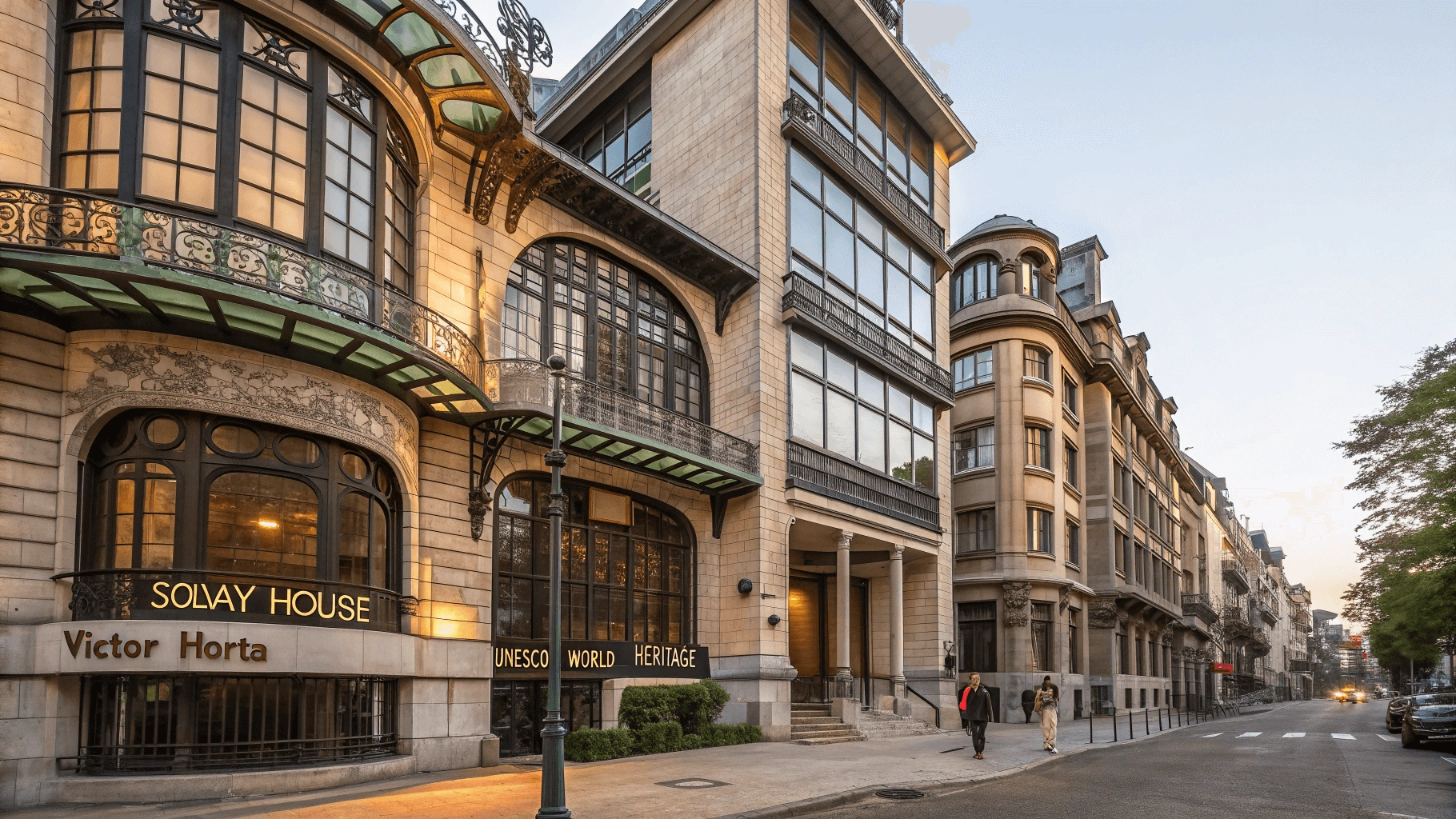Introduction
YES, the Solvay House is indeed part of a UNESCO World Heritage site. If you’ve been searching for “Solvey House UNESCO” (a common misspelling), you’re in the right place – we’ll clarify everything about this architectural masterpiece. This magnificent building stands as one of Victor Horta’s most brilliant achievements in the Art Nouveau style, representing the pinnacle of this revolutionary architectural movement that swept through Europe at the turn of the 20th century.
For a broader overview of the Art Nouveau movement in Europe, see this comprehensive entry from Wikipedia on Art Nouveau.
This comprehensive guide provides everything you need to know about the Solvay House’s UNESCO status, why it earned this prestigious recognition, and what this designation actually means. You’ll discover how this elegant residence forms a crucial part of the “Major Town Houses of the Architect Victor Horta (Brussels)” serial property, inscribed on the UNESCO World Heritage List under reference number 1005. “Solvey House UNESCO”
Table of Contents
Solvay House and UNESCO: The Official Connection
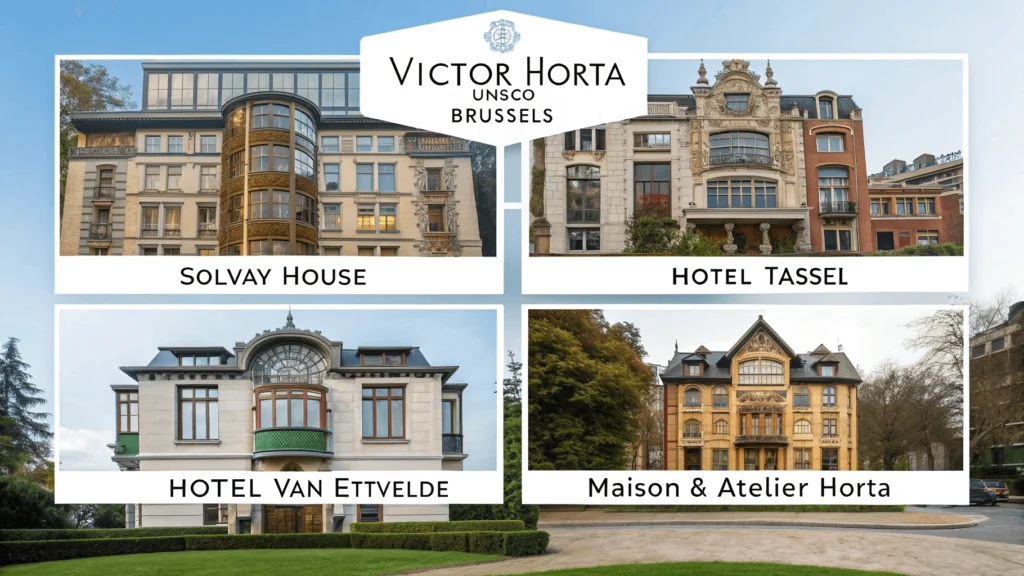
The Solvay House (Hôtel Solvay) is not individually listed as a UNESCO World Heritage site. Rather, it forms an integral component of a serial property titled “Major Town Houses of the Architect Victor Horta (Brussels),” which was inscribed on the UNESCO World Heritage List in 2000. “Solvey House UNESCO”
The official listing, reference number 1005, encompasses four of Victor Horta’s most significant residential works in Brussels, each representing the revolutionary Art Nouveau style that transformed architecture at the turn of the 20th century. You can verify all details on the official UNESCO listing page.
The complete UNESCO serial property includes:
- Hôtel Tassel (built 1893-1894)
- Hôtel Solvay (built 1895-1898)
- Hôtel van Eetvelde (built 1895-1898)
- Maison & Atelier Horta (built 1898-1901)
Together, these four townhouses represent the finest expression of Victor Horta’s innovative approach to architecture and interior design, earning them collective recognition on the world stage. “Solvey House UNESCO”
Why Was the Solvay House (& Horta’s Houses) Granted UNESCO Status?
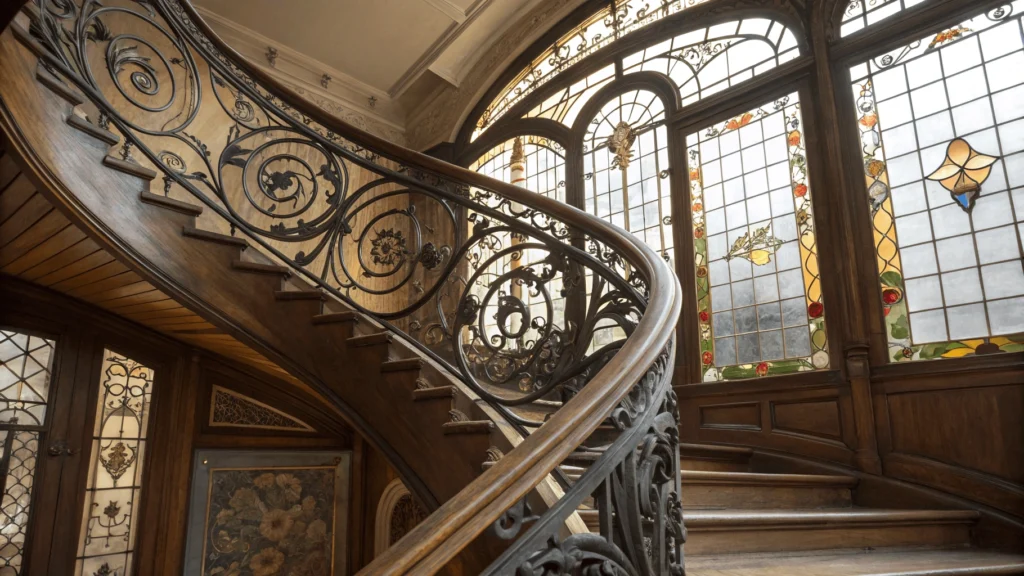
The UNESCO World Heritage designation isn’t given lightly—sites must demonstrate “Outstanding Universal Value” (OUV) by meeting specific criteria. The Horta townhouses, including the Solvay House, were recognized under three key criteria: For an explanation of how UNESCO evaluates sites and what each inscription criterion entails, refer to the UNESCO World Heritage Criteria.
- Criterion (i) – Representing a masterpiece of human creative genius
- Horta’s works revolutionized architecture by seamlessly integrating structure, decoration, and furnishings into a unified whole
- The Solvay House exemplifies his genius through its harmonious design where every element, from structural ironwork to light fixtures, contributes to a cohesive artistic vision
- Criterion (ii) – Exhibiting an important interchange of human values
- These buildings demonstrate the transformative influence of Art Nouveau on architectural thinking
- Horta’s innovations in using modern materials (particularly exposed iron and glass) influenced generations of architects worldwide
- The Solvay House showcases how traditional materials could be reimagined for modern expression
- Criterion (iv) – Being an outstanding example of a building type illustrating a significant stage in human history
- The townhouses represent the birth of modernism in architecture
- They capture the spirit of industrial innovation and social change at the turn of the 20th century
- The Solvay House particularly illustrates how new wealth from industrial advancement could be expressed through revolutionary architecture “Solvey House UNESCO”
The Solvay House stands out even among Horta’s works as his most ambitious and comprehensively designed residential commission. Its extraordinary preservation makes it exceptionally valuable for understanding Horta’s complete artistic vision. Unlike many Art Nouveau interiors that have been modified or lost over time, the Solvay House maintains its original layout, built-in furniture, decorative elements, and even some original textiles and furnishings. “Solvey House UNESCO”
A Closer Look at the Solvay House (Hôtel Solvay)

The Architect: Victor Horta
Victor Horta (1861-1947) was the preeminent architect of the Belgian Art Nouveau movement. Born in Ghent, he studied in Paris before establishing his practice in Brussels, where he developed his revolutionary approach to architecture. Horta rejected historical styles in favor of organic, fluid designs inspired by natural forms. His distinctive use of curved lines, dynamic spaces, and integration of industrial materials with handcrafted details made him a pivotal figure in architectural history.
Commission & History
The Hôtel Solvay was commissioned in 1895 by Armand Solvay, son of the wealthy industrialist Ernest Solvay, who had made his fortune through innovations in the soda production process. Ernest Solvay’s chemical breakthrough, known as the Solvay Process, is explained in depth on Wikipedia’s Solvay process article. Construction took place between 1895 and 1898, during the height of Horta’s creative powers and Brussels’ economic prosperity. Unlike most architectural commissions, Horta was given virtually unlimited resources and creative freedom, resulting in what many consider his most spectacular residential achievement. “Solvey House UNESCO”
Key Architectural Features
The Solvay House captivates visitors from the moment they approach its distinctive facade:
- Facade: The asymmetrical stone facade incorporates sinuous iron balconies that seem to grow organically from the building. The curved bay windows maximize natural light while creating a rhythmic, musical quality to the streetscape.
- Structural Innovation: Throughout the house, Horta exposed iron structural elements, celebrating rather than concealing them. These columns and beams curve and branch like plants, blurring the line between structure and decoration.
- Light Management: The house features an innovative central light well crowned by a stained glass skylight. This brings natural illumination to every level of the home, with reflective materials and strategically placed mirrors amplifying the effect.
- Interior Integration: Every element—from door handles and light fixtures to furniture and staircase railings—follows consistent design motifs. Whiplash curves, botanical inspirations, and dynamic lines create a complete artistic environment.
- Materials and Craftsmanship: The interiors showcase extraordinary craftsmanship in multiple materials:
- Exotic woods carved into fluid forms
- Custom-designed stained glass with nature-inspired patterns
- Intricate mosaic floors with flowing patterns
- Custom-made textiles that complement the architectural elements
- Painted surfaces with coordinated color schemes
- Spatial Innovation: Horta reimagined traditional room arrangements, creating flowing spaces that guide movement naturally through the house while maintaining privacy where needed.
Current Status “Solvey House UNESCO”
The Solvay House remains privately owned by the Wittamer-Decamps family, who acquired it in 1957 and have served as exceptional stewards of this architectural treasure. Their careful preservation has maintained the integrity of Horta’s vision, making it one of the best-preserved Art Nouveau interiors in the world. “Solvey House UNESCO”
Recent restoration efforts have focused on the facade and structural elements, ensuring this masterpiece continues to inspire future generations. While the house is primarily a private residence, limited guided tours are occasionally available by appointment, typically during special heritage events or through specialized architectural tour organizations.
Understanding the “Solvey” vs “Solvay” Spelling
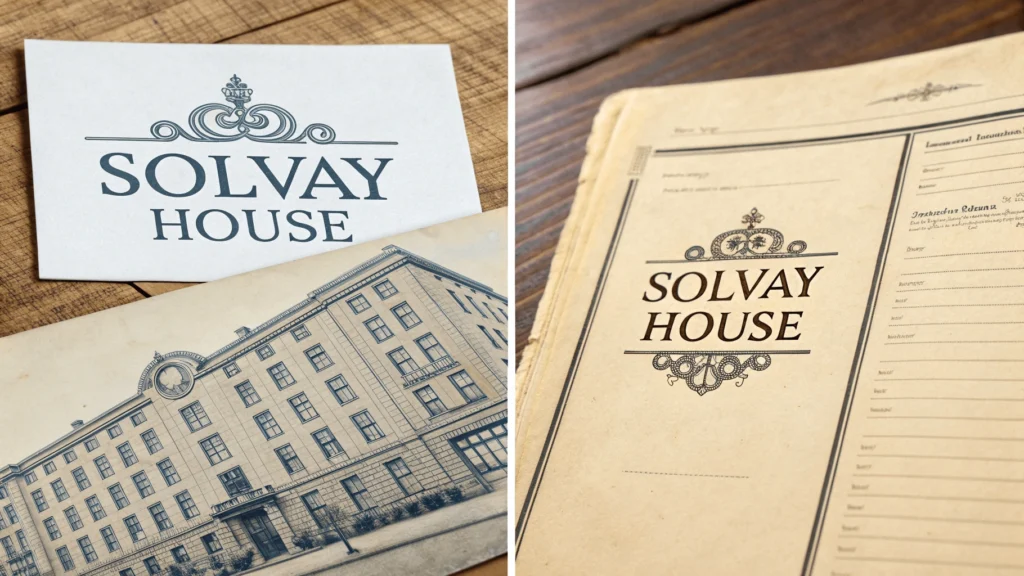
If you’ve been searching for information about the “Solvey House UNESCO”, you’re not alone in using this common misspelling. The correct spelling is “Solvay House” (or Hôtel Solvay in French), named after the Solvay family who commissioned it. Armand Solvay was the son of Ernest Solvay, the famous Belgian chemist and industrialist who developed the Solvay Process for soda ash production, creating the family fortune that made this extraordinary house possible. “Solvey House UNESCO”
Solvay House UNESCO Status vs. Other Brussels Landmarks
Brussels boasts several architectural treasures, but not all have achieved UNESCO recognition:
| Brussels Landmark | UNESCO Status | Year Listed | Notes |
|---|---|---|---|
| Solvay House (as part of Horta townhouses) | Yes | 2000 | Part of serial property reference #1005 |
| Grand-Place | Yes | 1998 | Listed for its exceptional 17th-century guild houses |
| Atomium | No | – | Iconic but not UNESCO-listed |
| Royal Palace | No | – | Historically significant but not UNESCO-listed |
| Horta Museum (Maison & Atelier Horta) | Yes | 2000 | Part of same listing as Solvay House |
The Horta Museum deserves special mention as it’s not only part of the same UNESCO listing as the Solvay House, but it’s also regularly open to the public. Located in Victor Horta’s former home and studio, it offers visitors the opportunity to experience his architectural vision firsthand, with many original features intact. “Solvey House UNESCO”
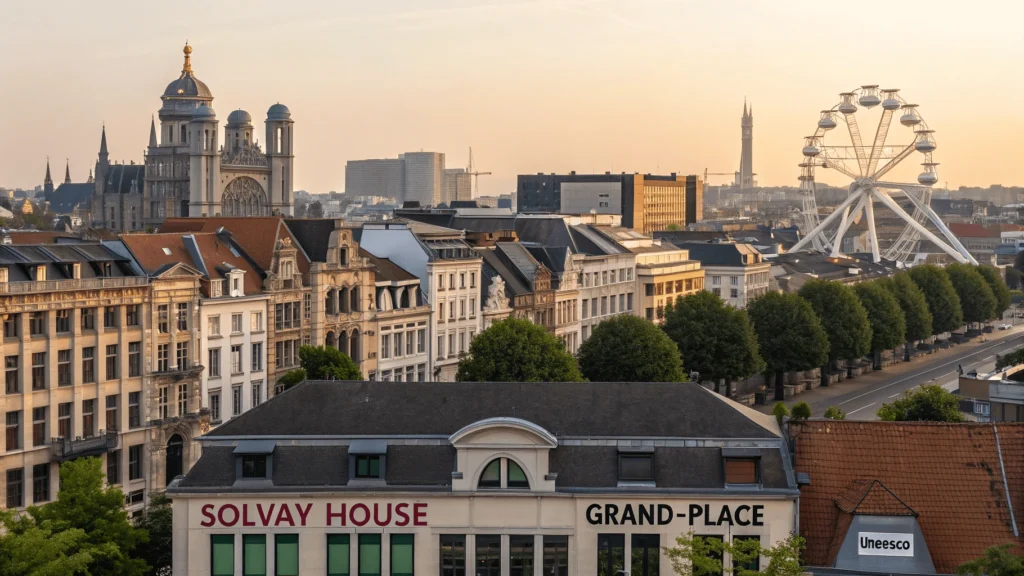
Frequently Asked Questions
Is the Solvay House a UNESCO site?
Yes, the Solvay House is part of the “Major Town Houses of the Architect Victor Horta (Brussels)” UNESCO World Heritage site, inscribed in 2000 under reference number 1005.
Who designed the Solvay House?
The Solvay House was designed by Victor Horta, the pioneering Belgian architect who was the foremost creator of Art Nouveau architecture. “Solvey House UNESCO”
Can you visit the Solvay House?
The Solvay House is primarily a private residence. However, limited guided tours are occasionally available during special heritage events or through specialized architectural tour organizations. Check with Brussels tourism authorities for current visiting possibilities. “Solvey House UNESCO”
What is the UNESCO listing number for Solvay House?
The Solvay House is part of World Heritage property #1005, “Major Town Houses of the Architect Victor Horta (Brussels).”
Why is the Solvay House important?
The Solvay House represents the pinnacle of Art Nouveau residential architecture. Its comprehensive design, innovative use of materials, exceptional preservation, and masterful integration of art and architecture make it a crucial component of its UNESCO World Heritage listing and a milestone in architectural history. “Solvey House UNESCO”

Conclusion “Solvey House UNESCO”
The Solvay House stands confirmed as a vital component of the “Major Town Houses of the Architect Victor Horta” UNESCO World Heritage site. This magnificent building represents not just an architectural treasure of Brussels, but a turning point in global design history where art, craftsmanship, and architectural innovation merged to create spaces of unprecedented harmony and beauty. To understand the broader significance of UNESCO heritage protection, visit the World Heritage Centre – About World Heritage.
Horta’s visionary approach at the Solvay House—combining industrial materials with organic forms, reimagining spatial relationships, and creating total design environments—continues to inspire architects and designers more than a century later. Its UNESCO status ensures that this revolutionary achievement will be preserved for future generations to study and admire. “Solvey House UNESCO”
Whether you’re an architecture enthusiast, a student of design history, or simply someone who appreciates human creativity at its finest, understanding the significance of the Solvay House enriches our appreciation of the built environment and the visionaries who transformed it.

